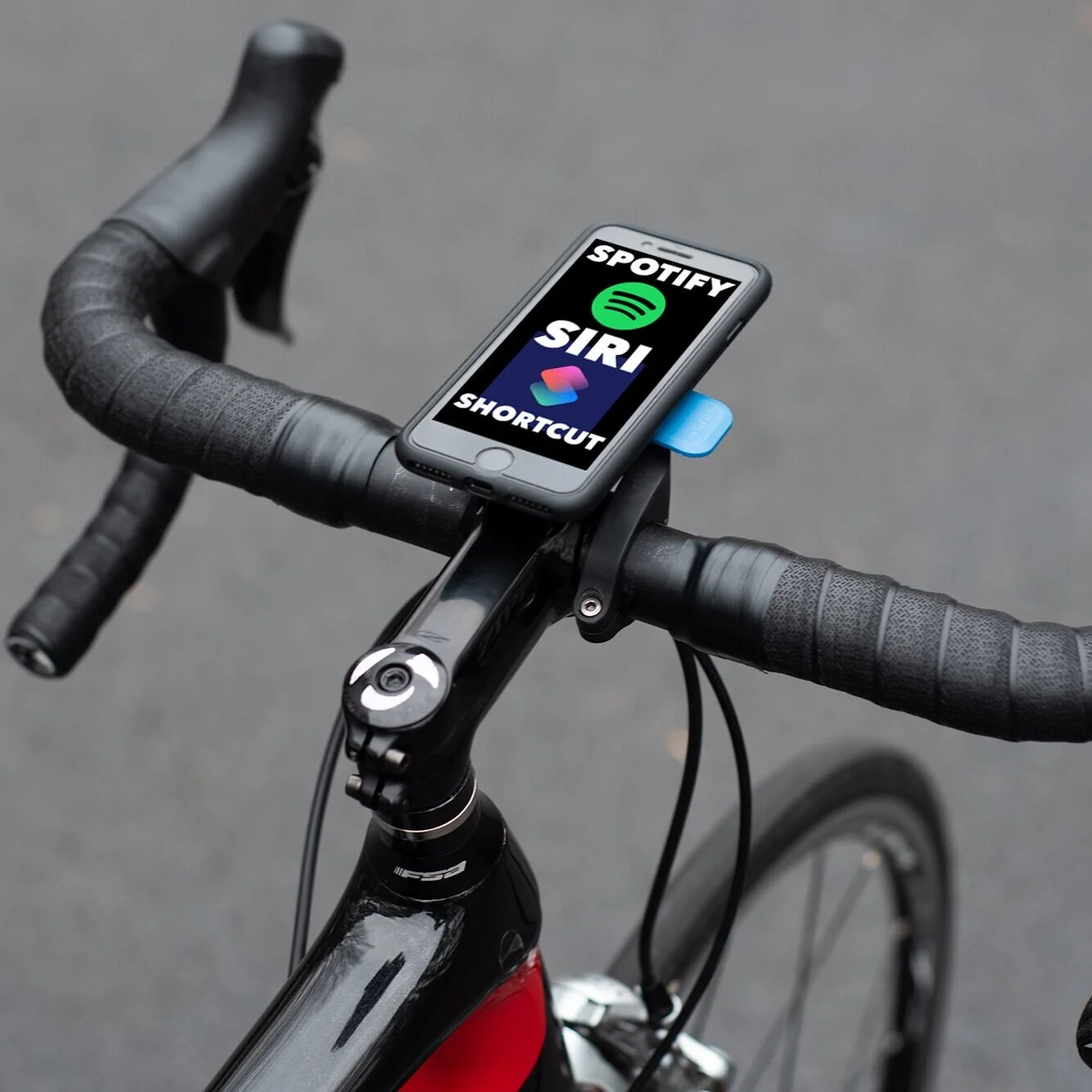3T Exploro Pro GRX Review
Disclaimer: This post contains affiliate links, through which we earn a commission.
Overview:
The gravel riding bug has bitten me hard! The latest trend hitting the cycling scene has caught my attention and I’m very glad it did. After spending months researching this topic, I finally pulled the trigger and dove into this rapidly growing part of the cycling market. I ultimately settled on the 3T Exploro as my choice of gravel bike. I’ve had the pleasure of riding my new bike for the last 2 months during which time I’ve been able to put roughly 1000km (620 miles) on the clock. I’m excited to share my first thoughts and impressions about the 3T Exploro in this post. Let’s however take one step back and take a brief look at gravel riding in general. Check out the video paired with this blog post here!
Gravel riding has certainly grown in popularity over recent years and it continues to develop from the grass roots days when a few mavericks were pushing road or cyclocross bikes to the max on off-road surfaces. Today we see an increasing number of manufacturers getting into this space and I really don’t blame them for doing so. Whereas the regular road bike market might have seen some saturation in recent years, a brand-new market segment like gravel gives manufacturers a whole new product line to tap into. The gravel trend has also made its appearance in various other parts of the industry. We’ve seen the first signs of this as a number of international professional cyclists have indicated their intentions to switch to gravel racing in the upcoming season. We’ve seen races like the Tour de France include gravel sections. We’ve even seen indoor training apps like Zwift add gravel bikes along with making the ride speeds more realistic over gravel surfaces. In my opinion, the future of any kind of “road” riding will be found in gravel. Wide open gravel roads, generally free from high traffic volumes will provide one of the few safe places where cyclist can still enjoy the thrill of being outside with the reduced risk of harm from vehicles. Gravel riding as it currently stands means different things to different people. To some, gravel is a statement, a counter-culture lifestyle to live more freely, while for others, gravel simply offers access to some new roads to ride and explore. Wherever you fall on this spectrum I hope that this review can help you in making your next gravel bike purchase.
3T Exploro Pro GRX:
Turning the attention now to my 3T Exploro: What an awesome bike! I figured I would just put that statement right out there before saying anything else. If you don’t get a chance to read this full review, then those few words should wrap it up for you. I have not had this much fun on a bike for a long time. I’ve been blown away at what you can throw at this bike and yet it will happily oblige. Sometimes the words “game changer” gets thrown around a bit too easily, but in this instance, I believe it’s more than fitting. The Exploro lives up to its name and has provided for plenty of explorations down roads and trails that I have not been able to ride before.
Let’s dive into my specific 3T Exploro model to see what gives this bike such a great feel. I’ll walk you through the regular specs and some modifications that I made to the stock set-up. Do take the time to watch the video that goes along with this review to get a true sense of the ride quality over varying terrains and see for yourself how the bike handles gravel surfaces.
Exploro Line-up:
The 3T Exploro Pro with GRX components sits lower down in the line-up of Exploro models. The most basic entry level model comes with SRAM Rival components, with the next level up being the Exploro Pro GRX. Subsequent models in the line-up are kitted out with SRAM Force (mechanical) groupset and at the top end you can expect to see SRAM Force AXS and Red AXS components fitted to the bikes. While there are plenty of reviews out there that cover the higher-end models, not much has been written about my 3T Exploro Pro GRX model. Given that the price point for this model is much lower than higher end models I can see it being a popular model for those riders looking for a solid gravel bike kitted out with quality gravel components.
Frame:
The 3T Exploro Pro GRX and 3T Exploro Pro Rival models ship with the Exploro Pro frame. Although still a carbon frame, the Pro frames do weigh in slightly heavier when compared to the Team frames that are fitted to all the models in the higher price categories. During the process of looking for a gravel bike, I was able to test ride an Exploro model equipped with the Team frame. The weight was certainly a noticeable feature that helped draw me to the Exploro. I was in some way disappointed when I first picked up the Exploro Pro model and did not get that same “wow” feeling with regards to the weight. The Exploro Pro models are fine in terms of the weight, but won’t be the lightest bike lined up at the start of a mountainous gravel race. My bike (size medium, fitted with pedals, 2x bottle cages and double grip tape) weighs in at 9.35kg 20.6 lbs. Not bad, but certainly not gravity defying either. As we work our way through the list of components, you’ll see that there are some weight saving areas that you can tap into, should the weight be of critical importance.
There is one feature about the 3T Exploro Pro GRX frame that puts it in a class of its own when compared to the other models - the color! This is one seriously gorgeous paint job. Out of all the models in the Exploro line-up, this one stands out head and shoulders as the best-looking frame. The grey-blue color truly pops and provides slightly different appearances under different lighting conditions. I’ve already received a few compliments on this bike’s color just wheeling it into the local bike shop.
I have great praise for the design and engineering that went into making the 3T Exploro. You’ll see throughout this review that some very innovative designs were used to create the “World’s first aero gravel bike”. There is however one component that I really wish they just left alone and avoided getting too fancy with - the rear derailleur hanger. This might be the smallest part of the frame, but it’s also the part that I have the biggest gripe with. If something isn’t broken, don’t fix it. The standard bike hanger has been attached to frames for decades, but 3T decided to make the 3T Exploro with a hang loose hanger. What this means is that the hanger screws into the rear axle after installing the wheel. It all looks great on paper, but actually installing the hanger this way is nothing short of annoying. Maybe things are a bit easier with an SRAM derailleur, where you can lock out the cage arm, but it’s been such a frustration with the GRX groupset. Please 3T, if there is one thing you can fix on future models it’s this. There are some other complications that also come with this design. Think of indoor smart trainers (like my Tacx Neo 1), which relies on a quick release adapter for thru-axle bikes. This hanger makes the installation of such adapters a mess. Each time you remove the back wheel, you will be faced with the frustration of also having to install the hanger (with the rear derailleur attached). Correct gear indexing depends heavily on the alignment of the hanger and with this design, one is just never assured that the hanger is straight and in the correct place. Ok, enough of my ranting. Despite this frustration, the 3T Exploro has many other awesome features, so let’s dive into some other parts of the bike next.
Groupset:
The name of the 3T model gives away what groupset you’ll find fitted to this bike. Shimano recently launched their new gravel-specific groupsets in the form of GRX. Shimano has catered for different levels and are offering the RX400 (Tiagra equivalent), RX600 (105/Ultegra equivalent) and RX800 series (both mechanical and electronic options that compare with Ultegra) as different options. The Exploro Pro model comes fitted with a mixture of some of these components.
The rear derailleur fitted to the 3T GRX model is the 11 speed RX812 direct mount long case. This derailleur pulls from the mountain biking world and offers a clutch mechanism to help maintain the tension in the chain and prevent chain drops over bumpier surfaces. This is particularly useful for a 1x set-up like the one found on the Exploro. The ability of the RX 812 to accommodate a 42 tooth lower cassette sprocket will allow for a fairly wide-range MTB cassette to be used. The stock model of the 3T Exploro Pro GRX does exactly this and ships with the 11-42T Shimano CSM 7000 cassette. This is not one of the lightest cassettes on the market, and should you be looking for some weight saving, you might want to consider upgrading to the CS M8000 or a further step up from this could even be the XTR CS-M9000 11-speed cassette (only available in a 11-40T option).
There is no front derailleur, since 3T has stuck to their roots and offers only 1x options on all Exploro models (with the exception of the top of the range LTD edition model which comes with 2x Red AXS). Whereas the concept of a 1x system might be a bit strange to the pure roadies out there, the mountain bikers will be all too familiar with this kind of minimalistic set-up. The debate about 1x versus 2x is a whole topic on its own and one I will gladly write about in some future blog posts. I will however say that the cleaner look of the 1x drive train compliments the 3T Exploro’s sleek looking design extremely well, but it’s not without its drawbacks.
As far as the shift/brake levers go, the Exploro Pro GRX model comes stocked with the GRX RX600s. The left-hand shifter is of course only a brake lever whereas the right-hand side provides for a comfortable shifting and braking experience. The hoods have a very comfortable feel and provide a solid grip for your hands. The hoods are slightly oversized when compared to the traditional road shifters, but this comes in handy on technical sections. Out of all the components in this GRX groupset, the shift levers are by far my favorite part.
3T opted to break away from installing a full GRX groupset by not selecting the 1x GRX crankset on this model. Instead they picked the Praxis Alba M30 crankset. The single direct mount chainring in the front comes as a 42-tooth ring. This chainring, in combination with the 11-42T cassette, means that you will be running a 3.81:1 ratio (hardest gear) up to a 1:1 ratio (lightest gear). Whether this kind of gear range will be sufficient for you will depend on the particular use cases.
The last piece to the GRX puzzle comes in the form of the RX400 flat mount hydraulic disc brake calipers, with Shimano’s 160mm centerlock rotor. As can be seen from the list above, this is no standard GRX groupset, but rather a mixed bag of components from various levels pieced together. Clearly some cost-saving choices were made here and there, but in the end, I think it comes together as a rather solid groupset.
Technical spec sheet details aside, lets focus now on the actual user experience when it comes to this particular groupset. As much as I like the groupset on paper the real-world performance has been somewhat mixed. I’ll start by saying that my current road bike is running the slightly dated Shimano 105 5800 groupset. Although this groupset might be older, it still runs like a dream and has set the benchmark for my expectations pretty high for what a groupset should feel like. Since the very first spin of the crank to test the GRX set-up, it just hasn’t quite matched up to the older 105 set-up. There are 3 main areas where this GRX groupset has left me wanting more. Next, I’ll touch on the 1x set-up, clutch mechanism and the brake calipers, to explain where there might be room for improvement.
The 3T Exploro is my first taste of a 1x gear set-up. As mentioned, earlier the whole debate about 1x vs. 2x is still hot and alive and I’m still forming my opinion. This 1x GRX groupset has however not helped the cause of the 1x side all that much. If you are considering going 1x be sure to do your homework on chain lines. Cross chaining (running a small-small or large-large gear combination) have always been discouraged on a regular 2x system, but for 1x set-up those combinations are relied upon countless times throughout any given ride. Take the 42-42T combo on the 3T Exploro. I go into that gear numerous times on a regular ride through a local park whenever I hit the steep climbs. On the other side of the spectrum I have the 42-11T combo as my heaviest gear, a gear that I use on just about every single piece of downhill tarmac road that I encounter. In both of these two extreme ends of my gear range the chain line is fairly crossed and creates some inefficiencies in the system. Don’t get me wrong, both gears work well and will get the job done, but if you are particular about the noise and rubbing that comes from your drive train, then these combinations will drive you insane. This might not be the fault of the GRX groupset in particular and more a 1x set-up in general, but I have seen other groupsets that can handle the more extreme gear ranges with much more efficiency. The inefficiencies in this system get further exaggerated by the clutch mechanism, bringing me to my next point.
The clutch system built into the rear derailleur has taken some time to get used to. Mountain bikers reading this review will be very familiar with the clutch system, however for a traditional road rider like myself, this is something new. It does exactly what it is designed to do and keeps the tension on the rear mech to prevent chain slaps or drops over the rougher surfaces. I think my biggest frustration with the clutch is that it works a little too well. Flipping the clutch switch between on and off makes a noticeable difference on the amount of tension you can find during shifting. It’s particularly noticeable when shifting out to the extreme gear ratios. Shifting into combinations like 42-42T or 42-37T feels forced and certainly not as smooth as I would like it to be. Turn the clutch off and some of that inefficiency definitely goes away. I was given the advice from a fellow rider to run it without the clutch on, especially when going over easier gravel roads. Thus far this has made a pleasant improvement to the shifting experience and I have yet to run into any chain drop issues. A future solution that I will explore is to keep the clutch turned on, but to reduce the amount of tension that the mechanism places on the derailleur.
The last point of note about the 3T Exploro’s GRX groupset relates to the RX400 brake calipers fitted to the 3T Exploro. You can tell that these calipers sit towards the lower-end of the GRX line-up. I’ve had my fair share of frustration when dealing with my front caliper, which has regularly given disc rubbing issues. The one seal has been extremely lazy, requiring special attention and adjustments during my weekly bike cleaning routine. Those small annoying little rubs on the brakes are enough to drive anyone crazy. Every time I hear that faint metal sound, I’m reminded of the precious watts that are wasted against my own resistance. I’m exploring options on how to improve this scenario and specifically wondering if re-bleedig the system will flush out the dirt stuck in the front brake. Besides the constant rubbing, I’ve also run into some wobbling rotor issues of late. I’ll note that all of these issues related to the GRX components are a critique on the part of Shimano, rather than 3T. The frustrations here take away from the incredible design of the bike. But enough about the groupset, let’s move on to some of the other components fitted to the 3T Exploro Pro.
Wheelset:
The 3T Exploro Pro comes with the Fulcrum Racing 700 dics brake wheelset. I’ve developed a bit of a love-hate relationship for these wheels. The first thing to note is that they really aren’t the lightest wheels in the gravel pack. Coming in at 1740g for the set, you can tell that some of the potential weight saving that I mentioned earlier can certainly be found in the wheels. Given this bit of extra weight, you do get a sense of stability and the ride-feel is great when it comes to bumpier surfaces. I can’t however claim that these wheels are as stiff as I would like them to be. When pushing some serious watts and rocking from side to side out of the saddle, I can tell that they are being put under some pressure. When the road/gravel surface leans itself to fast rolling, you truly get the sense that the extra bit of momentum from the weight is pushing you along. The flip-side is unfortunately also very true in that once the road tilts upwards, or some extra resistance picks up from the gravel, the momentum gets lost fairly quickly.
Initially I had an issue with the wheel that came installed on my bike. The rear wheel rim had a nasty little dent in it that I noticed only after the first ride. I can’t say where this blame should fall; the shipment company, the bike store, Fulcrum or maybe on myself. The dent was significant enough to throw the wheel out of true, adding to the frustrations as listed above. The positive to this whole story is that the bike store acted quickly to contact Fulcrum (or interesting enough they contacted their holding company Campagnolo). Fulcrum assessed the damage and sent me a new set. A big thanks to them for this act of good will! That kind of gesture helps tip my overall assessment of these wheels back in a favorable direction. As training wheels these will work just fine, but when you are looking for a fast and/or light set of racing wheels, it might be worth the money to splash out on a good set of carbon wheels.
Tires:
The stock tires fitted to the 3T Exploro Pro GRX model are the WTB Riddler 700x37c tires. I’ll get into tire choices in more detail in a following section to explain one of the bike’s biggest advantages - the ability to run various tire sizes. I ran the 37mm tires for a few rides and then decided to bump up to the WTB Nano 700x40c tires instead.
The terrain that I ride on most often with this bike holds a few technical sections that require extra grip and shock absorption. The stock 37mm tires really shine on the regular gravel roads that don’t have as many loose gravel sections. The tire tread on the Riddler’s allows for fast rolling over smoother surfaces. The roads that I encounter most often do however feature quite a few steep gradients where the loose surface created some tire slip when pushing down hard on the pedals while out of the saddle. Since switching to the Nano’s, I’ve gained a good bit more traction on the looser surfaces. I made one additional modification to the stock tire set-up by converting to a tubeless set-up. With the lower tire pressure allotted by this conversion, I get more comfort as well as confidence when going through the technical sections.
Handlebar:
The 3T Exploro Pro GRX model that comes with the bike is the 3T Superergo PRO handlebar. Aerobar proponents might want to sit up and take note in this section. The 3T Exploro line-up differs with regards to the type of handlebar that comes fitted to the bike. Both the Rival & GRX models come stocked with the PRO handlebar, while the higher end models all come with the TEAM handlebars. Aside from the weight differences that can be found between the two categories there is one serious feature that might be overlooked if you don’t take special note. Only the Pro handlebars are clip-on compatible. The addition of clip-on aerobars to gravel bikes has become a bit of a controversial topic lately as to whether they should be allowed at gravel races or not. That debate aside, if you are looking for a bike that you can mount a ton of accessories (think gopro mounts, phone holders or other bikepacking gear), then the Pro model is a must for the simple reason that the TEAM handlebars won’t be able to accommodate all of these attachments.
Stem:
The stem that that you will find fitted to the 3T Exploro Pro model is the 3T Apto Pro stem. The medium sized bike that I got came fitted with a 90mm stem. I immediately swapped out this stem with an old Bontrager 100mm stem that I had from a previous bike. As you will see from the sizing and geometry section later on, I fit between the medium and large sizes. I intentionally opted to go with the lower size and knew that I would have to create a more open riding position by lengthening the stem.
The Apto Pro stem that comes standard with the bike really fits in extremely well with the whole “Aero gravel bike” theme of the 3T Exploro. The very first thing that I noticed with regards to the stem was the backward facing bolts, clearly engineered to be more aerodynamic by hiding the bolts at the back of the stem. The downside to this design is an extremely awkward angle to adjust the bolts. If you plan on adjusting the bars only once, maybe using a torque wrench during an indoor fitting session, then this design should not bother you. If you intend to tweak your stem setting while out on a few rides, then be prepared that this might not be as smooth a process when compared to stems with forward facing bolts.
Seatpost & Saddle:
The seatpost and saddle might be two completely under-estimated parts of the bike when you think of comfort and performance, but in my opinion 3T has done a great job here with some really clever design features. The D-shaped (“Sqaero”) seat-post that forms part of the frame adds to the aero theme of the bike, but the best part of the design comes in the elastomer-dampening ring which surrounds the saddle-rails insert. This is 3T proprietary technology and you’d be surprised with how well this really works. There is definitely a bit more squishiness in the riding due to this design. Another innovative design feature with regard to the top of the seatpost comes in the form of the rail insert. The design works with two interlocking spline rings. Each offering splines with different degrees of adjustability. The first gives you 10 degrees of adjustment with each rotation, while the other gives 9.5 degrees. This allows the ability to make 0.5 degree changes at a time to the seat angle. It’s not that easy to figure out at first, but it actually works very well after getting the hang of it. I also really appreciate how the design isolates the seat angle adjustment and the seat back-and-forth adjustment. Once you have the angle dialed in, you can focus on the back-and-forth adjustment without worrying that the angle got messed up.
The saddle fitted to the bike reminds you that although this is a fast-looking bike, it also means business on off-road sections. The WTB SL8 saddle breaks away from that true road-bike performance look, providing some mountain biking flare. I didn’t think that I would like this saddle as much as I do, but it’s really comfortable. A gel insert further enhances the squishy feeling that the seatpost design offers. The two components in combination have truly helped to smooth out a great deal of the bumps that you find with gravel riding.
Geometry & sizing:
In a recent Bikeradar podcast, I heard mention that one of the easiest (and cheapest) ways in which bike manufacturers can improve the ride quality of bikes is through the use of smarter geometry in the design. The 3T Exploro is a prime example of a bike that does exactly this.
Be sure to spend some time looking at the sizing chart and you might notice a few clever design elements that help make the Exploro fast, while also smoothing out the ride over rough gravel roads. The most noticeable part of this design is the asymmetric design with regards to the chainstays. At 415mm, these chainstays come in fairly short when compared to other bikes on the market (the Canyon Grail measures in at 425mm and the Pinarello Grevil at 420mm). The drive-side chainstay comes in at a much lower angle when compared to the non drive-side. This translates into a stable, yet zippy ride feel. You will also find a fairly steep head angle and a short trail. The biggest take-away from the aggressive geometry on this bike should be that it was designed to be fast. No doubt the aero theme of the Exploro extends into the geometry and allows for a familiar roadbike-like position. If you come from a pure mountain biking background this type of set-up might be something to get used to, however any roadies making the jump to gravel will find this set-up super comfortable and one that closely mirrors a road bike.
As hinted at earlier, I opted to go for the medium-sized Exploro. The sizing chart reveals that a rider of my height (1.79cm or 5’10’’) can either go with the medium or large size. If I could choose again, I might just go for the larger size instead. With the medium, I needed to extend the stem to provide some additional reach, but I most likely would need to shorten the stem on a large size. A shorter stem provides a more agile riding experience in my opinion. This is, of course, pure personal preference and I would recommend that you speak to a good bike fitter before making any decision on the correct sizing.
Gravel Plus Concept:
Gravel bikes, by nature, essentially sit between a road and mountain bike, with a heavy lean towards the road design. It’s similar to a road bike in many regards, with drop handlebars and a geometry that leans itself to fast and aerodynamic riding over longer distances. Gravel bikes do however offer one major advantage over road bikes - wider wheel and tire clearances. Most road bikes can only take tires up to 30 or 32mm in width (my old road bike could only manage 25mm). Gravel bikes can easily run tires of up to 42mm in width (on a 700c wheel). Wider tires mean lower pressures, allowing some shock absorption over bumpier gravel roads.
The 3T Exploro is no different when it comes to running a fairly wide tire on a 700c wheel. The Exploro does, however, have one very cool party trick up its sleeve. They call it the “Gravel Plus” design. What this means is that you can choose to run either a 700c wheel with up to 40-42mm tires or a 650b wheel (that’s 27.5 inches in MTB terms) fitted with tires up to 2.1 in (54/55 mm) in width. The math behind this design means that the diameter of the wheel+tire circle essentially stays the same regardless of the chosen combinations. This feature was certainly one of the biggest selling points for me. While there are other bikes on the market that can also easily switch between the 700c and 650b wheels, none of them provide as many aerodynamic advantages as the 3T Exploro.
I mentioned at the beginning of the review that I will gladly use the words “game changer” to describe the 3T Exploro and the GravelPlus design is where I truly find the biggest value in this bike. The applications of what can be done with this bike are incredible. Slap a nice set of deep section carbon aero wheels (with 25-28mm tires) on and you have a speed machine that you can easily use at any road race or triathlon. Fit it with the 700c wheels and up to 42mm tires and you can confidently line up at just about any gravel race with less technical surfaces. Should you want to take the bike out for a long bikepacking journey or even a more technical gravel ride or some easier MTB trails, then the 650b wheels with MTB tires will make for the perfect combo. According to the Rules of Cycling, as assembled by Velominati, Rule #12 states that one should always own n+1 bikes, but this might very well be the n=1 bike for which people have been wishing. The various applications get a further boost when you throw in all the aero features that come with the 3T Exploro.
Aero Gravel:
Yes I know, this is where my road background is really going to shine through. We roadies sure are suckers for all this aero stuff, but hear me out on this one. I’ve been doing a number of triathlon races over the past year and I knew with the purchase of the 3T Exploro that I was looking for a bike that can basically do it all. Could one bike handle gravel races and MTB trails, but yet still be a solid option for a triathlon or road event? The only way for this to be even remotely possible would be if the bike had solid gravel features, but at the same time offered triathlon bike level aerodynamics. The Exploro definitely caught my attention with the company’s website claiming this to be “The world’s only full aero gravel bike”. The more I dug into this statement, the more I realized it truly does offer so many incredible aerodynamic features to which other gravel bikes on the market don’t even get close. The 3T Exploro is fast!
The most striking design feature is what 3T calls the “Sqaero” tubing shape. The idea behind this design is that they made the downtube big enough to catch the airflow that comes off the wheels. They could have extended this design to create a full airfoil, but opted to keep the surface area smaller and therefore squared off the downtube. Hence the name, “Sqaero”. The oversized downtube has the added benefit that the water bottles now fit in well behind the tube creating even less wind drag. I think it’s brilliant. It’s not a completely new design concept because if you take a closer look at the top end Pinarello bikes (think F10, F12 and Grevil) you will find a fairly similar approach when dealing with the wind drag. The Sqaero design runs throughout the whole bike and can also be seen on the headtube, seattube, seatstays and seatpost. I really appreciated the aerodynamic data as listed on 3T’s website about how they engineered the Sqearo shape not only to be fast in theory, but to be “realfast” when considering realistic riding speeds with water bottles and even mud attached to the bike.
The aerodynamic theme on the 3T exploro extends into other parts of the bike as well. You find that the flattened fork shape allows for fast airflow over the front brake caliper, further assisting with the drag on the front end of the bike. I’ve mentioned in a previous section that the stem also adds some marginal aerodynamic benefits with the bolts tucked away behind the head of the stem. Then, to top it all off, you even get internal cable routing on the 3T Exploro to ensure a clean design that will maximize the aerodynamic benefits.
The technical details all look great, but the true benefits from this aero design can only be seen when you take the Exploro out on a ride. The bike really does not disappoint when it comes to going fast, over all kinds of different surfaces. Let’s dive into that ride experience of the 3T Exploro next!
Ride Performance:
I have a clear recollection of the first day I took this bike over to some local trails and rode the first section from the tarmac roads onto a bumpy bit of gravel. I was bracing myself for the rough patch, but was instead surprised to feel the bike smooth out the ride as I blasted over the rough gravel. At that moment, I truly understood what all the gravel hype is about. The 3T Exploro has absolutely blown me away with how well it can handle so many different riding surfaces. It truly has opened up so many new options for routes during any given training ride. I can hook up sections of tarmac that would never have been possible with my road bike. Once you get beyond all the technical features of this bike and just take it out for a ride you get a feeling like never before. I love how it can truly take on any challenge that you throw its way. The best and only way to give you a sense of how well the bike can handle various riding surfaces would be to include it in the video portion of this blog post. Check it out here!
I have a local route that incorporates a bunch of different types of terrain that you would want to throw at this bike. Watch as I put the bike through its paces and take it over tarmac, gravel roads, fire roads, wide and narrow trails and even some more technical MTB trails. Take a look for yourself to see why I think this is one of the best bike purchases I’ve ever made.
Final Wrap:
What a bike! The 3T Exploro PRO GRX has been an absolute joy to add to my bike collection. It has opened up a whole new world for places I can ride. Sure, a mountain bike could have taken me over those same routes, but a gravel bike like the 3T Exploro allows me to cover that distance so much faster. No longer do you have to slog it out over the tarmac with a heavy mountain bike just to get to some off-road sections. With all the aero features on a bike like the 3T Exploro, you get to fly along on the tarmac roads, yet once the gravel hits, you get to carry that exhilarating feeling over into the off-road sections.
It’s a bike that offers so many innovative design ideas to deliver a fast, yet comfortable ride. The GravelPlus design allows for countless applications and really gets very close to the bike that can do it all and do it well. Yes, the PRO GRX model is by no means perfect and you would have seen throughout this review how elements like the additional weight from heavier components (when compared to higher-end models), shifting inefficiencies and minor design frustrations (like the hang loose hanger) do detract from what is an otherwise excellent product.
I will end off by saying that this bike should be a real hit with those riders coming from a traditional road riding background. The geometry and snappy handling makes for a familiar riding experience. Riders coming from a more traditional mountain biking background will find that the Exploro opens up a new way to ride existing routes. The thrill of riding a beautiful, fast and well-designed bike like the Exploro will surely appeal to many. I’m excited for the gravel racing season to kick off and to put the 3T Exploro to the challenge.
Thanks for reading! Be sure to let us know what you think of the 3T Exploro in the comments below. Also subscribe to the newsletter to be kept up to date on all the latest posts from Mountain Road.
- Wiehan
And tell us! Have you tried out any gravel bikes yet? If so, share your thoughts on your experience below!




























